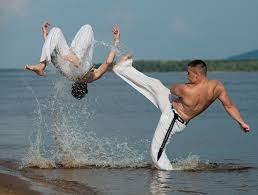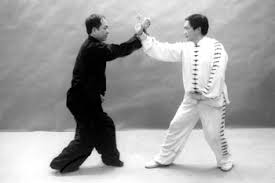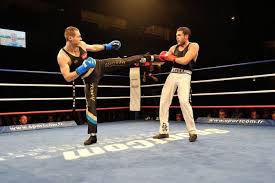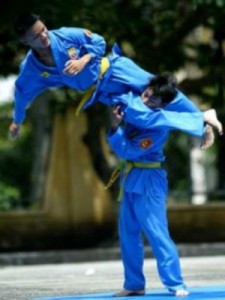YESTERDAY AND TODAY KARATE
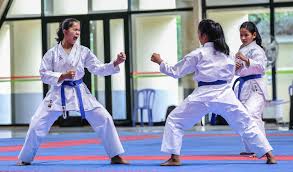 Karate – translated from Japanese literally means “empty hands” – this is the name of one of the types of martial arts, similar to boxing, wrestling, fencing and other sports.
Karate – translated from Japanese literally means “empty hands” – this is the name of one of the types of martial arts, similar to boxing, wrestling, fencing and other sports.
Karate as a method of self-defense was most developed, apparently, in the East, although historical documents show that various martial arts methods occupied an important place in different countries in the preparation of armies. Types of self-defense and attack were known in Ancient Rome, Egypt. India, China and many other countries.
In numerous wars of the period of the slave system, when the soldiers were armed with sabers, spears, daggers and bows, personal martial arts often decided the success of hostilities. That is why in Ancient Egypt, the Roman Empire and other countries find cultural monuments and historical documents testifying to the high level of development of the technique of combating man with man. All peoples of the world have various kinds of martial arts, rooted deep in history.
In 1938, University of Pennsylvania employees excavated in Mesopotamia. In the ruins of the Kiafaji temple near the city of Baghdad, they found a plate on which the relief (bas-relief) of two fisticuffs was clearly visible in a square of a limited area. Another find is the bronze figure of two wrestlers. The items found belong to the period of the 3000th anniversary of our era.
The oldest source testifying to the fighting technique is the painting on the tomb of Beni-Gassan (Middle Nile), also related to the 3rd-2nd millennium BC. The tomb depicts more than 400 techniques, throws with steps, grabs of arms, legs, blows, levers, combinations of techniques and other actions are clearly visible. Many of the techniques depicted apply today.
In the poem of Homer (the end of the II millennium, XI – X centuries BC), the picture of competitions in wrestling is reproduced. There are many other examples that testify to the existence of high technology martial arts.
In the program of the Olympic Games in 644 BC, a sport such as pankration was introduced, which is a combination of wrestling and fist fighting. In Rome, wrestling was used as a means of physically preparing warriors for hand-to-hand combat, on the one hand, and for spectacles, on the other. The basis of competitions in martial arts were the rules of pankration. Later fist fight stood out from the pankration into an independent form of hand-to-hand combat.
The most famous of the Greek wrestlers was Milo from Croton, he won the Olympic Games several times.
After the conquest of Greece by Rome, the forms and methods of struggle began to change. Greco-Roman wrestling was created on the basis of body grabs, the style of which exists at present.
During the collapse of the slaveholding society, the struggle turned into a spectacle exclusively and was then supplanted by the gladiators.
The Roman state in the 3rd century waged countless predatory wars. This made the Romans use various forms of physical exercises to train their troops.
The development of civilization led to the fact that the struggle and fights of gladiators began to gradually turn into various forms of spectacles and entertainment.
In the Renaissance (XIV – XVI century), fencing, horseback riding, javelin throwing, archery, swimming, etc. were developed in Europe. Methods of struggle were used in hand-to-hand combat.
In England in the XVI – XVII centuries there were three types of struggle, called the provinces where they developed (Devonshire, Westmoreland, etc.).
Migrants from England brought to America their types of wrestling, which were further improved; one of them was called the free-American wrestling. In France, the French struggle has survived to this day. Another form of martial arts that has retained its methods is savate, which in French means kicking.
English boxing and fencing teacher Frenchman Charles Lecourt added English boxing to Savate receptions and created his own training technique. He called this system of self-defense French boxing. By their means and methods, these self-defense techniques are few, which differ from karate.
In Japan, in the annals of the 7th century, the sumo wrestlers spoke at ceremonies in honor of the emperor for the first time. At the end of the XII century, sumo and jujitsu began to develop independently. Samurai for a long time and strictly kept the secrets of ju-jitsu. Subsequently, independent types were separated from ju-jitsu: fencing on sticks, judo, aikido, kendo, karate and other martial arts.
One hundred years ago, jujitsu ceased to exist. The most developed was fencing on sticks and judo, which are still cultivated in secondary schools in Japan. In 1882, Kadokan was founded in Tokyo, an institute where the means and methods of training judokas are stored, developed and studied.
Currently, in addition to national types of martial arts, there are also a number of international ones, such as classical wrestling, freestyle wrestling, judo, sambo, boxing, fencing, karate and other types.
